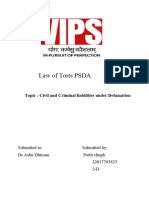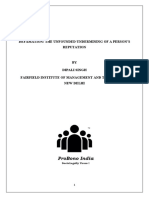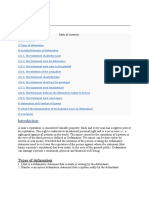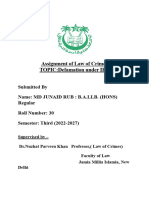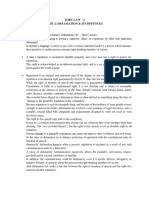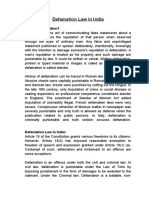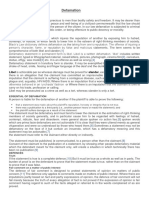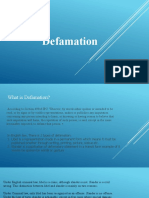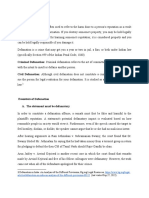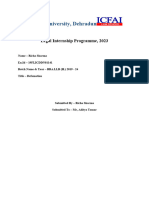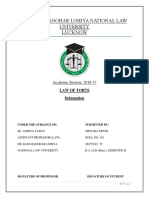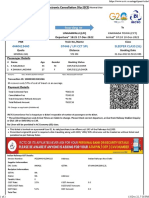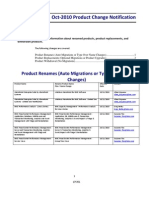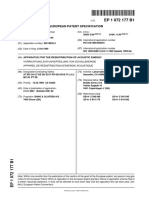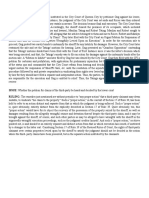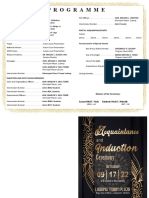0% found this document useful (0 votes)
16 views7 pagesDefamation
Defamation is a statement that harms a person's reputation, and it can be classified as either libel (written) or slander (spoken). In India, defamation is addressed under both civil and criminal law, with specific requirements for a successful defamation suit, including the necessity of a false statement made with intent to harm. The right to reputation is recognized as part of the right to life and liberty, and defamation laws balance this right against the freedom of speech and expression.
Uploaded by
Vaibhavi KathareCopyright
© © All Rights Reserved
We take content rights seriously. If you suspect this is your content, claim it here.
Available Formats
Download as PDF, TXT or read online on Scribd
0% found this document useful (0 votes)
16 views7 pagesDefamation
Defamation is a statement that harms a person's reputation, and it can be classified as either libel (written) or slander (spoken). In India, defamation is addressed under both civil and criminal law, with specific requirements for a successful defamation suit, including the necessity of a false statement made with intent to harm. The right to reputation is recognized as part of the right to life and liberty, and defamation laws balance this right against the freedom of speech and expression.
Uploaded by
Vaibhavi KathareCopyright
© © All Rights Reserved
We take content rights seriously. If you suspect this is your content, claim it here.
Available Formats
Download as PDF, TXT or read online on Scribd
/ 7

